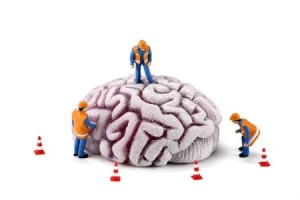Psychiatry Has No Clothes

Copyright: pixelbrat / 123RF Stock Photo
On April 29th of 2013, there was an astounding blog post by Thomas Insel, the Director of the National Institute of Mental Health (NIMH). He said that although the DSM-5 was due to be released in a few weeks, the NIMH would be “re-orienting its research away from DSM categories.” He noted that while the DSM has been referred to as a “Bible” for the field of mental health, “It is, at best, a dictionary, creating a set of labels and defining each.” Did you get that? The Director of the NIMH said the DSM was a “dictionary” that created “labels.” It was not, then functioning adequately, in his opinion, as its title suggests: as a Diagnostic and Statistical Manual of Mental Disorders! (emphasis added)
Insel said its strength had been “reliability”, meaning that it provided a way for clinicians to use the same terms in the same way. Its weakness was that it lacked validity. DSM diagnoses are based upon a consensus about clusters of symptoms and not any objective laboratory measure. “In the rest of medicine, that would be equivalent to creating diagnostic systems based on the nature of chest pain or the quality of fever.”
Insel was not using “reliability” in a statistical sense. In “The Myth of the Reliability of DSM,” Stuart Kirk and Herb Kutchins demonstrated conclusively that the DSM-III and DSM-IIIR were not statistically reliable. In fact, using the same statistic that Robert Spitzer used to justify the major changes to the DSM in the 1970s, they demonstrated that:
The reliability problem is much the same as it was 30 years ago [before the DSM-III]. Only now the current developers of the DSM-IV have de-emphasised the reliability problem and claim to be scientifically solving other problems.
Unfortunately, the tables in Figures 1 and 2 have been removed from the online version of their article. But the tables are still available in the original article found in the Journal of Mind and Behavior, 15 (1&2), 1994, p. 71-86. These tables plainly showed how the DSM statistical reliability was not what it was claimed to be. The Selling of the DSM (1992) by Stuart Kirk and Herb Kutchins has the tables. And there is a graphic comparison of the data within Mad Science (2013) by Stuart Kirk, Tomi Gomory, and David Cohen.
Insel went on in his blog to say that the NIMH will be supporting research projects that “look across current categories” or sub-divide them in order to begin to develop a better system. “We are committed to new and better treatments, but we feel this will only happen by developing a more precise diagnostic system.” In order to work towards that goal, the NIMH launched the Research Domain Criteria (RDoC). RDoC is only a research framework for now; a decade-long project that is just beginning. You can learn more about RDoC here (on the NIMH website).
Robert Whitaker, author of Anatomy of an Epidemic, said in a March 2014 interview that Insel stating that the DSM lacked validity was an acknowledgement the “disease model” has failed as a basis for making psychiatric diagnoses.
When Insel states that the disorders haven’t been validated, he is stating that the entire edifice that modern psychiatry is built upon is flawed, and unsupported by science. That is like the King of Psychiatry saying that the discipline has no clothes. If the public loses faith in the DSM and comes to see it as unscientific, then psychiatry has a real credibility problem on its hands.
Two weeks later on May 13, 2013, a joint press release was made by Thomas Insel and Jeffrey Liebermann, the President-elect of the American Psychiatric Association (APA). They said that the NIMH and the APA had a shared interest to ensure that patients and healthcare providers had “the best available tools and information” to identify and treat mental health issues.
Today, the American Psychiatric Association’s (APA) Diagnostic and Statistical Manual of Mental Disorders (DSM), along with the International Classification of Diseases (ICD) represents the best information currently available for clinical diagnosis of mental disorders. . . . The National Institute of Mental Health (NIMH) has not changed its position on DSM-5. As NIMH’s Research Domain Criteria (RDoC) project website states: “The diagnostic categories represented in the DSM-IV and the International Classification of Diseases-10 (ICD-10, containing virtually identical disorder codes) remain the contemporary consensus standard for how mental disorders are diagnosed and treated.”
The DSM and RDoC were said to be complementary, not competing frameworks. As research findings emerge from RDoC, they may be incorporated into future DSM revisions. “But this is a long-term undertaking. It will take years to fulfill the promise that this research effort represents for transforming the diagnosis and treatment of mental disorders.”
Saul Levine, the CEO and Medical Director of the APA said on May 5, 2014 that the DSM and the RDoC will “begin to come together” as the research from NIMH is included into the way they diagnose mental illness. They know that mental illness and substance use disorders are a bio-psycho-social illness. “We work very well together with NIMH. And I think that the whole field is looking to the science coming out of NIMH to include it as a way to help get better treatment for patients in this country.”
So the APA and NIMH affirm they are working towards the same goals as complementary research frameworks. Someday the research findings of RDoC may even be included into the DSM. But until then, the NIMH will have to continue to “ooh and aah” at the APA’s DSM and ignore the nay-sayers crying: “Look at the DSM; look at the DSM!” Also see my blog post, “Psychiatry’s Mythical Phoenix.”
